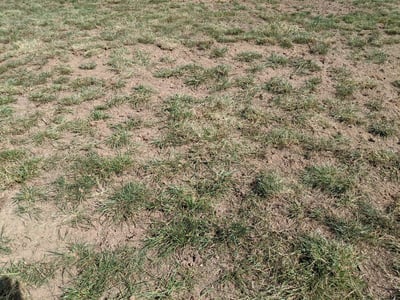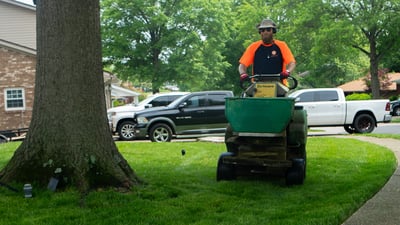

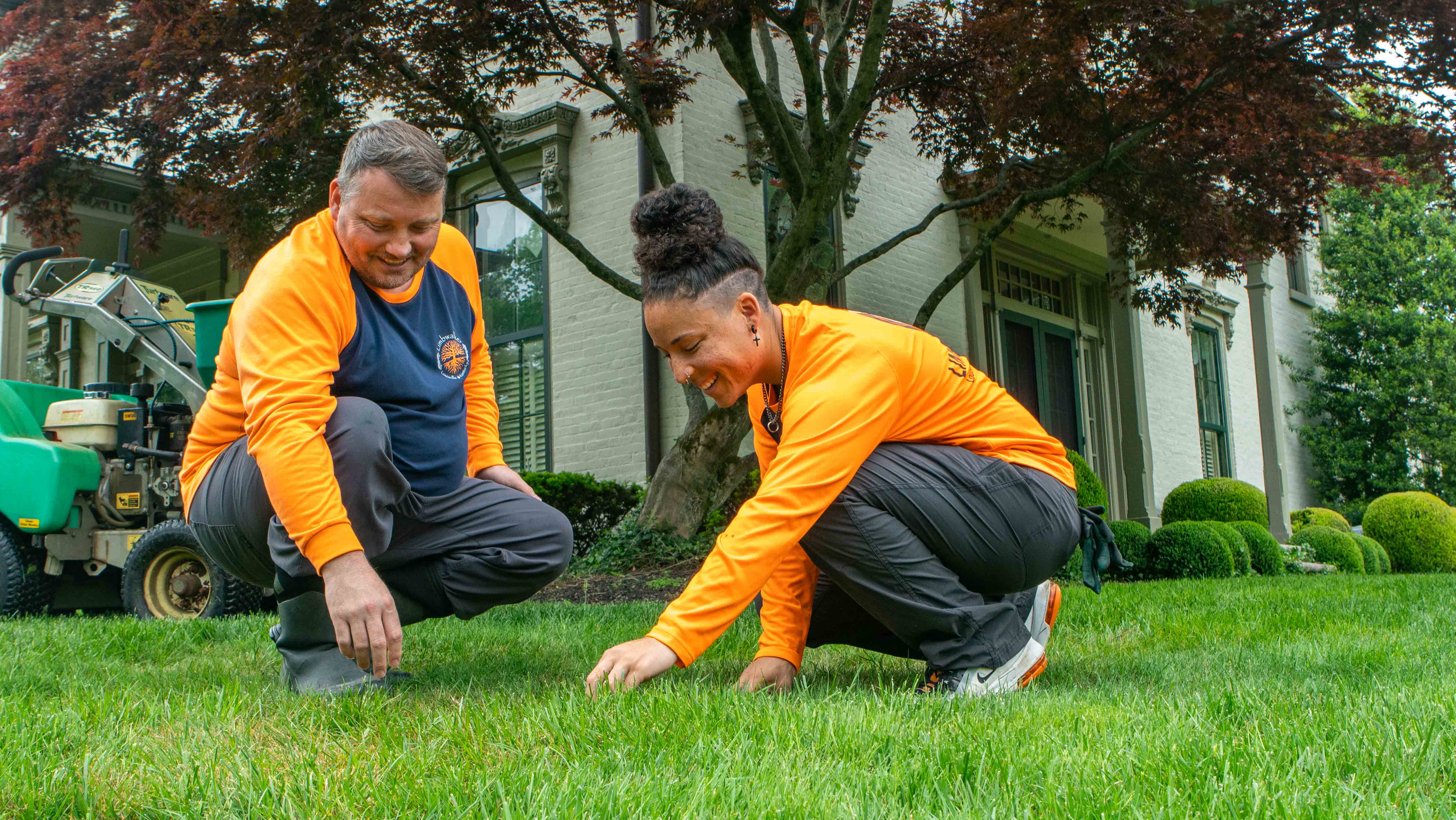
If you’re someone who cares about having a lush and thick lawn at your Louisville home, you might be wondering how often you need to do fall lawn seeding. You might have seen information out there that seeding should be an annual occurrence.
But is every fall really necessary?
The answer depends upon what kind of seeding you’re doing.
In this article, we’ll talk about the ways that you can perform grass seeding in the fall and what kind of timeline you should adhere to if you want the best results.
You probably already know that the best time to seed your lawn is in the fall. That’s for two key reasons.
For one, seeding in the spring can interfere with weed control efforts. The same pre-emergent products that are used to prevent pesky crabgrass growth would also inhibit your new grass from germinating.
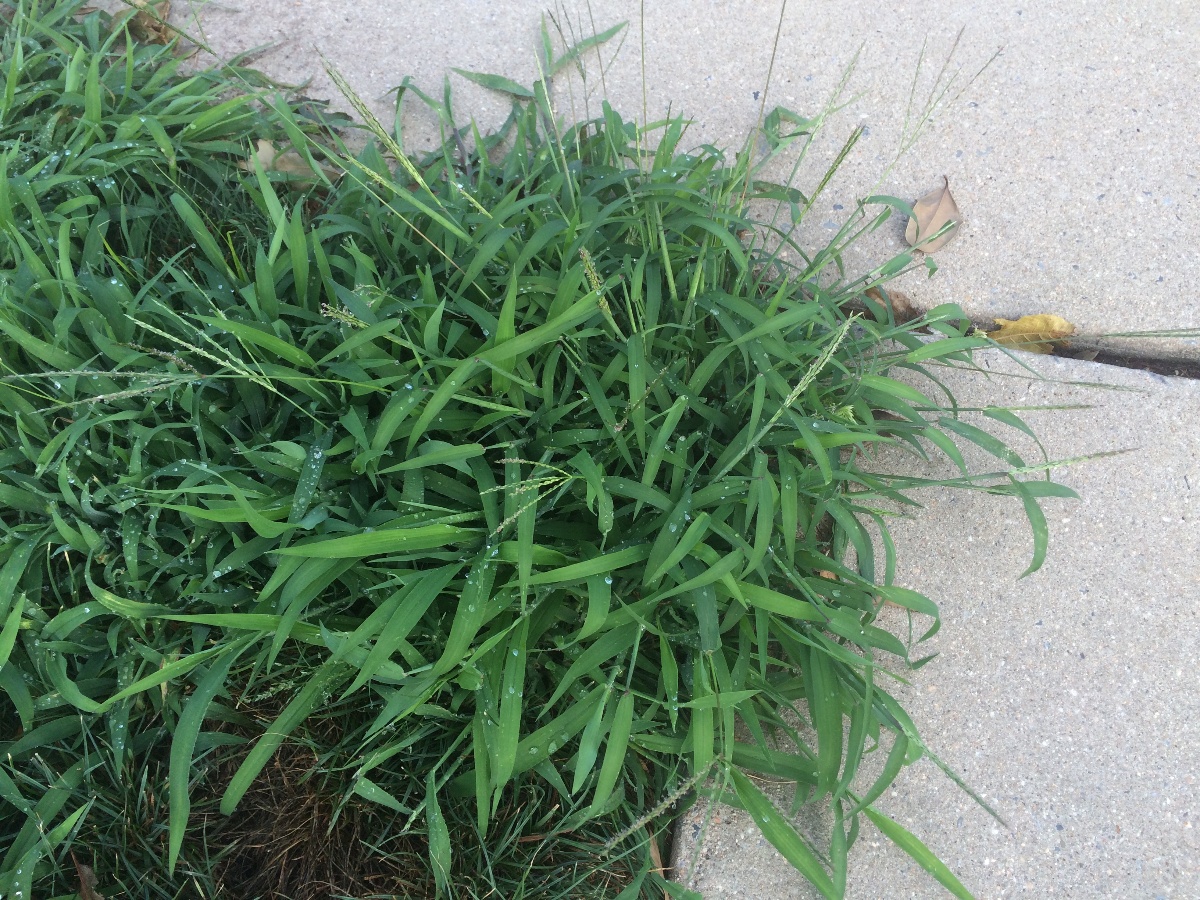
But the other reason is that the weather is optimal for new grass growth in the fall. The soil temperatures are still warm but the air is starting to cool down and your brand-new grass won’t be subject to the scorching sun (like it would in spring and summer). These create the best possible conditions for growing new grass.
Of course, you might be wondering how often you need to seed in the fall. Is it something to do every single season?
As we said from the start, it really depends on your seeding application method.
Most companies that offer lawn aeration do recommend having lawn overseeding performed every single fall. But at Limbwalker, we offer a service called power seeding, which we have found is much more effective (and therefore won’t need to be performed quite as often).
The article linked above will go into detail as to what makes power seeding superior but to sum it up, with power seeding, we are actually cutting rows into the soil and planting the seed there.
This is a lot different from lawn aeration in which holes are made in the soil (with the aerator) and then the seed is tossed over the yard (with the hopes that it falls into the holes).
.jpg?width=5168&height=2912&name=Fertilizer-application-lawn-care(1).jpg)
Since seeds require “seed-to-soil-contact” in order to grow, you get a much higher germination rate with power seeding than you do aeration.
Because of this, you really do not need to perform fall lawn seeding every single season.
Finally, the effectiveness of power seeding relies heavily on the homeowner’s diligence with watering. Little or no watering can result in poor results, but optimal watering will always result in a lush, beautiful lawn.
.jpg?width=5168&height=2912&name=Lawn-care-customer-cornhole%20(1).jpg)
Our recommendation is every other year if you want a really thick lawn.
While it’s true that power seeding is a more intensive process, many homeowners quickly see the value when they see the results. There’s a visual component to it and you’ll actually see the planted rows. You’ll also see that new grass starts growing pretty soon after. Homeowners tell us it’s a good feeling when they start to see that new grass pop up…especially in those bare spots.
And because they don’t need to have it performed as frequently, they can really appreciate the effectiveness.
While many homeowners come to us already knowledgeable about fall lawn seeding, we do still get homeowners that want to know if it’s really that important. People see it as an extra service and wonder if it’s something they really need.
As with many aspects of lawn care, it really boils down to expectations.
If you’re someone who wants an overall nice lawn but doesn’t care if you have some bare spots here or there, then fall lawn seeding might not be that important to you…and that’s okay. We completely understand that it’s your lawn and at the end of the day, it should be your expectations that guide your experience.
But we certainly have plenty of homeowners who want their lawns to be the best that they can be. That means a thick lawn without bare spots or thin areas.
For these customers, power seeding is the optimal solution.
What’s also important to realize is that having a thick lawn not only looks better but performs better, too.
Homeowners with a thick and thriving lawn report fewer weeds and overall healthier grass. That’s because a thick and healthy lawn will crowd out weed growth and fight back against diseases and pests better than a thin and struggling lawn.
Oftentimes, these are good reasons to consider power seeding your lawn.
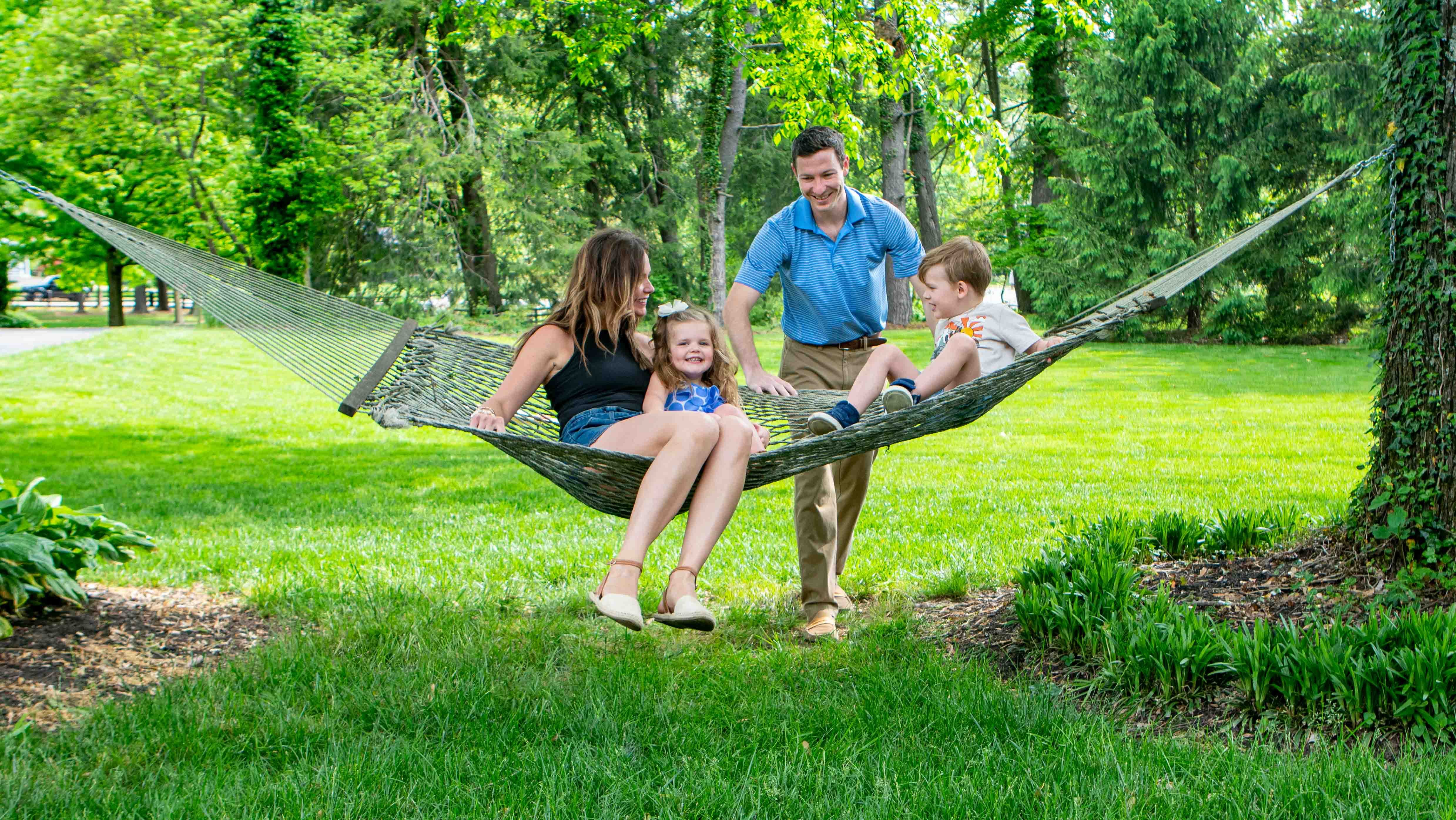
If you’ve decided you want to do fall lawn seeding, you’ll need to find the right company for the work. There are a lot of lawn care companies that only offer aeration and overseeding, but to get the most value for your investment, we do advise looking for power seeders.
For some of the reasons we explained in this article, we believe power seeding is the best way to grow a thick and healthy lawn.
It’s important to search for a company that takes your satisfaction seriously. Anytime you’re talking about an add-on service, you run the risk of finding companies that are just trying to push profit and fit in as many clients as they can.
But that’s not how Limbwalker treats this service.
At Limbwalker, we want to make everything as easy and successful for you as possible. We’re into power seeding because it’s the best way to get a thick and healthy lawn…and that’s what we want for our clients.
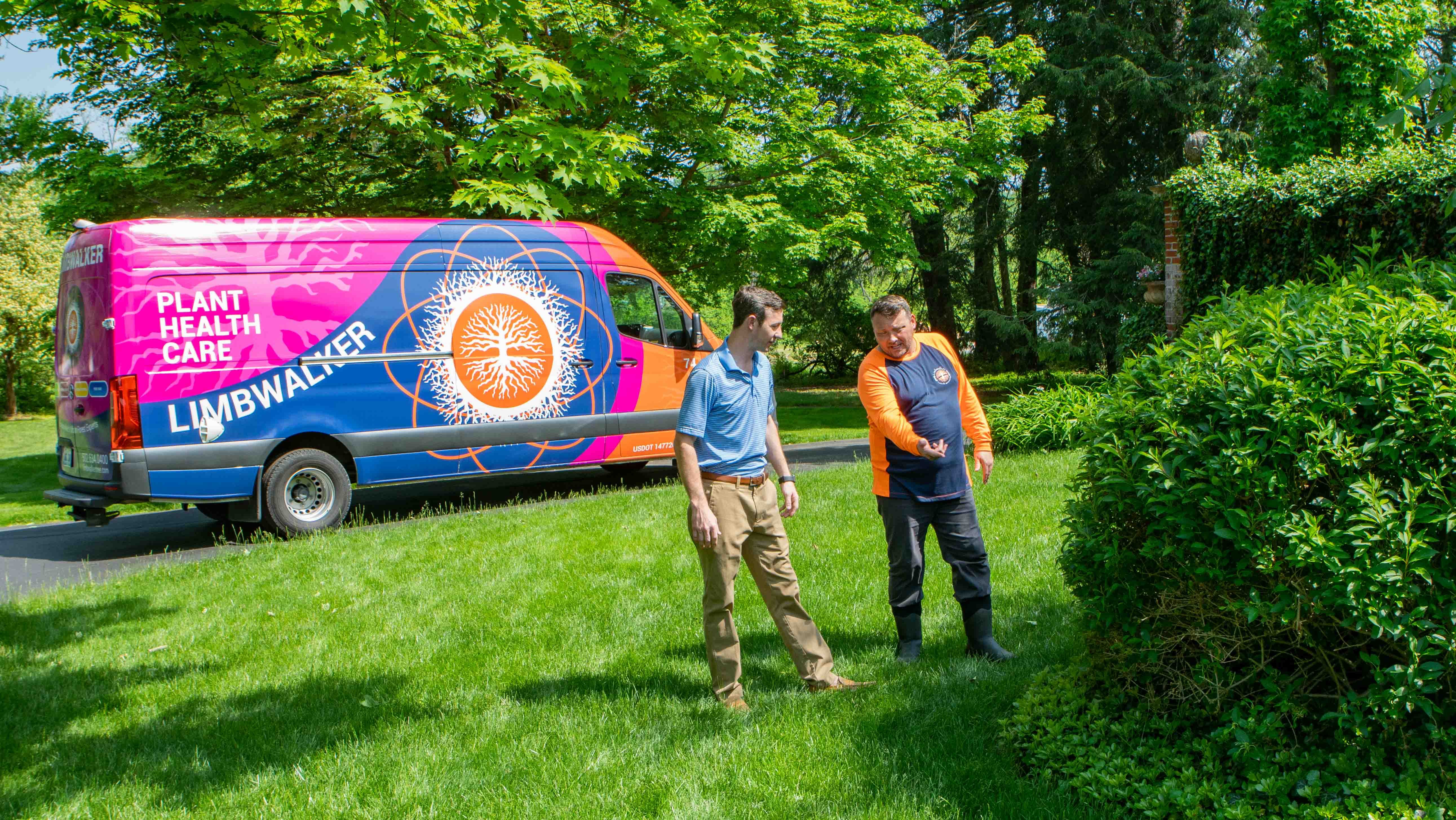
That’s why we perform quality checks for all of our clients who have had power seeding done. We come around to check to make sure that everything is growing as it should.
This is not a common occurrence in our industry but it speaks to why we’re in lawn care in the first place. We truly do care about delivering amazing results.
If we can answer any additional questions about fall lawn seeding, we’re here to help.
Are you ready to have a thick and healthy lawn that’s getting everything it needs at your Louisville, KY home? Get in touch with us to get a quote for our lawn care programs, which include three lawn care pricing options, and about adding power seeding to one of those programs.



